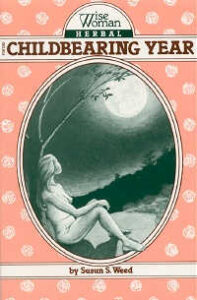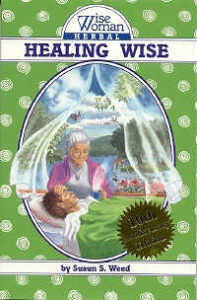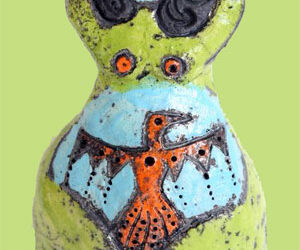Hi Susun,
With summer approaching, can you tell me how to best treat bug bites and bee stings naturally? What sort of things could I keep on hand in my first aid kit—or do they have to be freshly picked? Thank you!
Susun Weed’s response:
Soothe, heal, and prevent bites with safe herbal remedies that grow right where you live, north or south, east or west, city or country. The best natural remedies for insect bites are right underfoot.
Plantain, also called ribwort, pig’s ear, and the band-aid plant, is a common weed of lawns, driveways, parks, and playgrounds. Identify it by the five parallel veins running the length of each leaf. (Most leaves have a central vein with smaller ones branching out from it.) You may find broad leaf plantain (Plantago majus), with wide leaves and a tall seed head, or narrow leaf plantain (Plantago lanceolata), with long thin leaves and a small flower head that looks like a flying saucer. Many Plantago species have seeds and leaves that can be used as food or medicine. A South American variety (Plantago psyllium) is used to make Metamucil™.
How to use plantain? Make a fresh leaf poultice. Pick a leaf, chew it well and put it on the bite. “Like magic” the pain, heat, and swelling—even allergic reactions—disappear, fast! (Yes, you can dry plantain leaves and carry them in your first aid kit. Chew like you would fresh leaves.)
Poultices ease pain, reduce swelling, and help heal. No wonder they’re the number one natural choice for treating insect bites, bee and wasp stings.
Mud is the oldest and simplest poultice. Powdered white clay, which should be mixed with a little water or herb tea, can be applied directly to the sting as soon as possible. Clay can be kept on hand at all times and is less likely to contain fungal spores than the real thing. Finely ground grains such as rice or oatmeal, or bland starchy substances like mallow root, grated potato, or arrowroot powder also used as soothing poultices to ease itching and pain from insect bites.
Fresh-herb poultices are a little more complicated, but not by much. Just find a healing leaf, pluck it, chew it, and apply it directly to the sting/bite. If you wish, use a large leaf or an adhesive bandage to hold the poultice in place. Plantain, comfrey (Symphytum uplandica x), yellow dock (Rumex species), wild geranium (Geranium maculatum), wild mallow (Malva neglecta), chickweed (Stellaria media), and yarrow are only a few of the possibilities.
In the woods, you can take a leaf from a tree, chew it and apply that to the bite. Any tree will do in an emergency, but if you have a choice, the best leaves are those from witch hazel, willow, oak, or maple. Play it safe: Learn to recognize witch hazel (Hamamelis virginia) and willow (Salix species) leaves before you chew on them. Maple (Acer) or oak (Quercus) leaves are easier to recognize and safer to chew—unless you live where poison oak grows. If uncertain, avoid all shrubs and any trees with slick or shiny leaves. If the leaf you are chewing tastes extremely bitter or burns your mouth, spit it out at once.
To repel ticks, mosquitoes, and black flies, try a diluted tincture of yarrow (Alchellia millefolium) flowers directly on all exposed skin. A recent US Army study showed yarrow tincture to be more effective than DEET as an insect repellent.
If you’ve spent the day in an area where lyme disease is common, take a shower right away and scrub yourself with a bodybrush. Have a friend check you out for ticks. Also, it takes the tick some time to make up its mind where to bite, so most are unattached and will wash off.
If the worst happens and I do get a bite, I help my immune system by taking a daily dose of 2-6 dropperfuls of Echinacea tincture. I avoid Goldenseal as I believe it could have adverse effects. If I have symptoms, I use a dropperful of St. Joan’s wort (Hypericum) tincture three times a day to help inactivate the lyme’s organism.
Green blessings, Susun Weed
photos: Wise Woman Spiral © iStockphoto.com / Chuck Spidell | Aradia © 1997 Lauren Curtis












Has anyone ever used St. Joan’s Wort (Hypericum) to “inactivate lyme” as Susun says she does?? Is it only good for early detection, I wonder? Maybe a good question for Stephen Buhner!